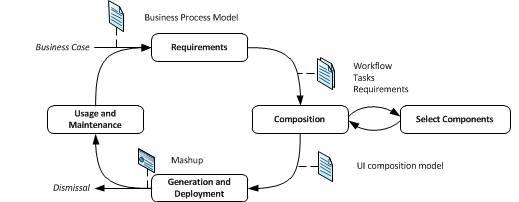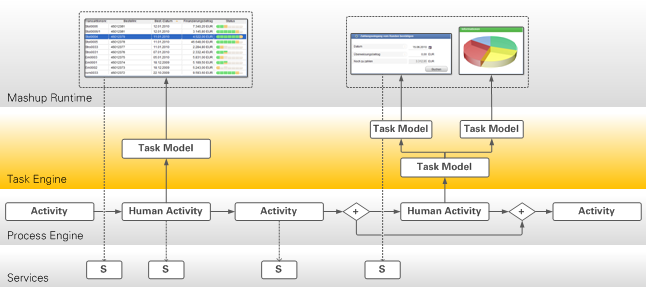







The orchestration of lose-coupled web services is the main goal of service-oriented architectures (SOA). However, mature composition approaches, such as BPEL), focus on enterprise application integration and machine-to-machine communication. Recently, the composition paradigm is transferred to the user interface (UI) layer, wherein mashups become a prominent approach for the lightweight and user-driven composition of distributed web resources such as data, logic and UI components. The CRUISe project propses concepts for the model-driven development and deployment of adaptive, composite web applications by reakizing the service-oriented composition of applications from uniform components providing data, business logic and user interface parts. However, the requirments phase as well as the integration of business processes in the model-driven development process is missing.
The project DEMISA aims at a model-driven development process from business process models to a mashup composition model. While business processes cover the big picture of the organizational goals and the composition of business services, user interfaces cover fine-grained interactions that are defined with the help of a UI compsition model.

Therefore, a concept for bridging the gap between workflow and UI model during design time as well as runtime is needed. During design time the decomposition of process activities and the formalization of requirements is proposed. Moreover, the integration of existing runtimes such as workflow engines and mashup runtimes, their synchronization is needed during runtime. Finally, in order to support domain experts model transformations and a modeling tool is needed.
The proposed solution consists of a sematic task model that refines business process activities in order to define requirements for composite mashup applications and to describe mashup components. Based-on this, the task-based recommendation of adequate UI mashup components and the task-based composition is proposed. Model-driven development methods for process-oriented mashups provide an essential contribution for the efficient process-oriented development of user-centered and context-aware applications.
